In addition to popular ornamental flowers such as orchids, lotuses, and roses, the living stone plant is also an excellent choice for beautifying your home. Today, let’s explore the unique and extraordinary beauty of the living stone plant, also known as Lithops, and uncover the hidden meanings behind its fascinating appearance.
1. Introduction to the Living Stone Plant
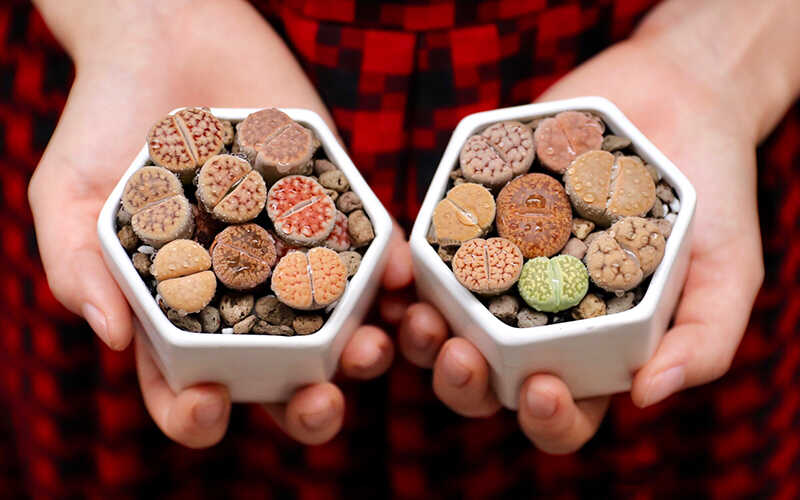 The living stone plant, native to South Africa
The living stone plant, native to South Africa
The living stone plant, scientifically known as Lithops turbiniformis, has several common names, including stone face plant, pebble plant, and flowering stone. This unique plant is native to South Africa and has been introduced to the Vietnamese market.
The leaves of the living stone plant come in a diverse range of colors such as pink, gray, brown, red, and green, offering a distinctive alternative to the typical green foliage of most plants. The veining on the leaves bears a striking resemblance to brain patterns or colorful pebbles.
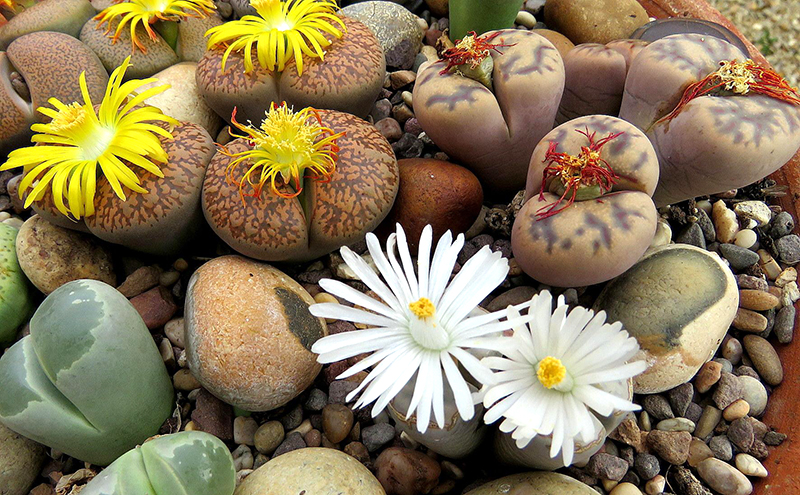 The living stone plant’s flowers display a vibrant array of colors.
The living stone plant’s flowers display a vibrant array of colors.
The flowers of the living stone plant are a sight to behold, boasting vibrant hues of yellow, white, and orange with numerous delicate petals. They emerge from a central fissure in the leaves, creating a captivating display.
The living stone plant is an excellent choice for decorating study tables, workstations, and indoor spaces due to its beauty and resilience. Belonging to the Aizoaceae family, it is a succulent species closely related to the pebble plant, making it highly adaptable and low-maintenance.
2. The Living Stone Plant’s Significance in Feng Shui
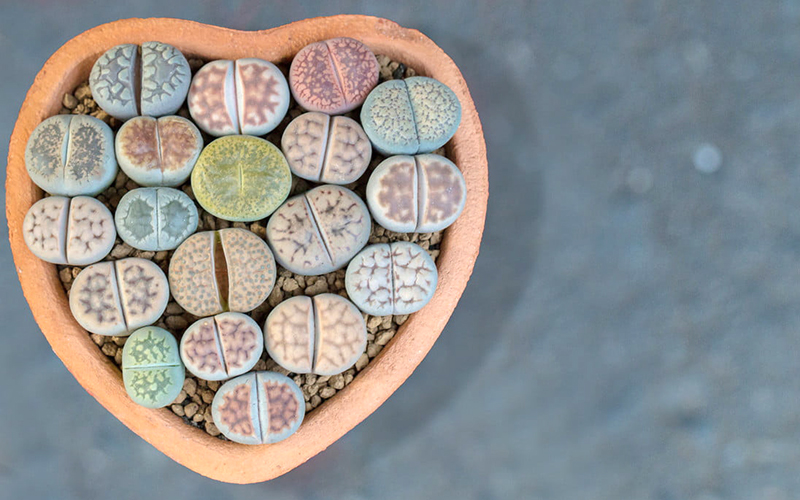 The living stone plant symbolizes positive energy and mental relaxation.
The living stone plant symbolizes positive energy and mental relaxation.
In the context of feng shui, the living stone plant represents a strong and resilient life force. It is believed to bring good luck and bestow courage and determination upon its owner. Moreover, its rugged appearance, despite its simplicity, is thought to ward off evil spirits and negative influences.
The subtle fragrance of the living stone plant is said to promote mental relaxation and enhance focus. This makes it an ideal addition to indoor spaces, helping to create a calm and soothing environment that aids in concentration and alleviates headaches induced by stress. The living stone plant also makes for a thoughtful gift on special occasions.
3. Growing and Caring for the Living Stone Plant
Planting Techniques
 Plant living stone plant seeds just below a thin layer of soil, approximately 1cm deep.
Plant living stone plant seeds just below a thin layer of soil, approximately 1cm deep.
To cultivate the living stone plant, begin by soaking the seeds in warm water for 2 to 4 hours, using a ratio of 3 parts boiling water to 2 parts cold water. Next, gently sow the seeds just below the soil surface, spacing them about 8 to 10cm apart.
Moisten the soil to maintain humidity, and within 1 to 2 weeks, you’ll notice the seeds germinating. Once the seedlings have established themselves, carefully transfer them to individual pots.
Although the living stone plant can be grown year-round, it thrives best when temperatures range from 18°C to 35°C. Therefore, spring, summer, and autumn are the ideal seasons for planting. As with any other plant, ensure you prepare the soil and obtain high-quality seeds before beginning the cultivation process.
For optimal growth, use well-drained, nutrient-rich soil, such as tribat soil. You can also decorate the pot with colorful mini pebbles to create a vibrant and natural-looking display. Living stone plant seeds are readily available at affordable prices, typically ranging from 65,000 to 75,000 VND per bag.
Care Instructions
To ensure the healthy growth of your living stone plant, pay attention to the fundamental aspects of water, light, and fertilizer.
Water: During hot seasons, water the plant about once every three days, and avoid overwatering, especially during rainy periods, as the leaves may wither and rot. In winter, you can reduce watering or even withhold water entirely.
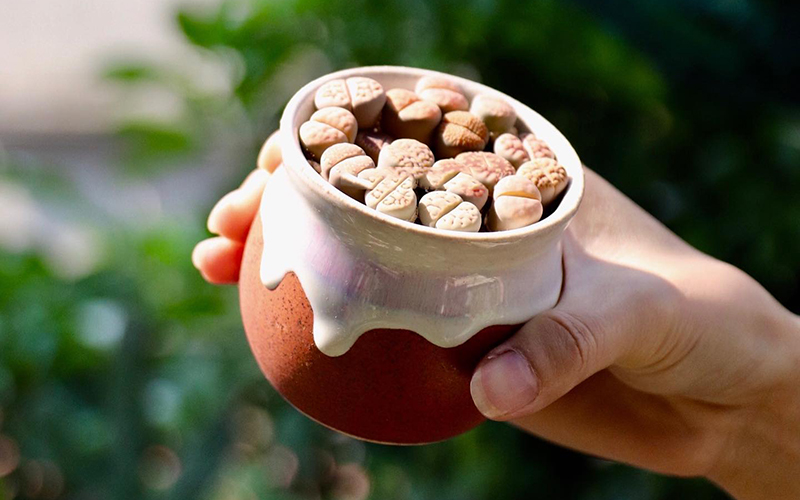 The living stone plant requires moderate exposure to sunlight, approximately 4 to 5 hours daily.
The living stone plant requires moderate exposure to sunlight, approximately 4 to 5 hours daily.
Light: Place your living stone plant in a bright, well-ventilated area, preferably where it can receive indirect sunlight for about 4 to 5 hours daily. Early morning or late afternoon sunlight is ideal, as direct midday sun can be too intense.
Fertilizer: Due to the living stone plant’s resilience, fertilization is only necessary once or twice a year. Its ability to thrive with minimal care means you don’t have to worry if you forget to tend to it for a few weeks or even months.
4. Where to Buy the Living Stone Plant and Price Range
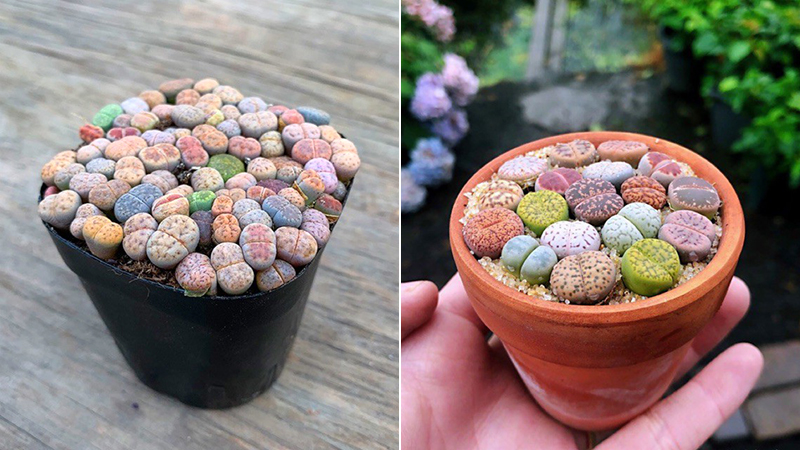 The living stone plant commands a higher price compared to other pebble plants due to its unique features.
The living stone plant commands a higher price compared to other pebble plants due to its unique features.
The living stone plant is somewhat more expensive than other pebble plants due to its distinctive and captivating features. A beautiful living stone plant can cost anywhere between 50,000 and 200,000 VND, depending on its size and variety. You can conveniently purchase this plant from various online retailers and e-commerce platforms.
Now that you’ve discovered the hidden meanings behind the living stone plant’s extraordinary beauty, why not add one to your collection? Its unique appearance and positive symbolism make it a wonderful addition to any home or office space.



































